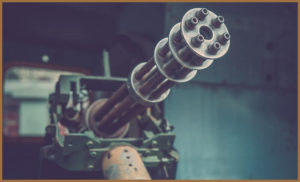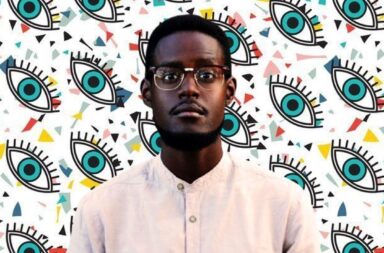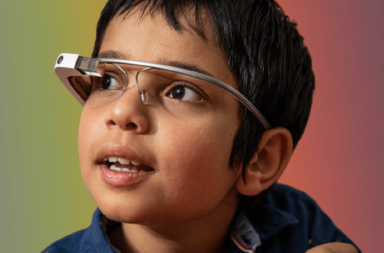United by our differences’ – it’s the kind of war cry you expect to hear in a particularly over-sentimental episode of the Power Rangers. However, despite a few hokey bad guys, autistic writer Chris Bonnello’s premier novel, Underdogs is so much more than the Saturday-morning-cartoon-romp it could seem…
With traces of young adult fiction icons like The Hunger Games, Divergent and The Maze Runner, but with all the umph of a Marvel cinematic block-buster, Underdogs is a hard-hitting debut, that champions neurodiversity and shakes up the status quo for how we have come to think of neurodiverse representation.

Underdogs Review:
Set in a dystopian London, where all the inhabitants have either been either executed or imprisoned, Underdogs follows the, yep you guessed it, ‘Underdogs’, as the rag tag cluster of special-ed students adjust to their new lives as the first and last chance of the UK’s liberation in southern England.
Consisting of a team of 8 plucky teen and preteen soldiers – each with more acronyms to their names than an early 2000’s online chatroom, including:
- Team leader Ewan who has P.D.A.
- Team hot head Charlie who has A.D.H.D.
- Underdog of the Underdogs Kate who has A.S.D.
The foundation of Underdogs is clearly aimed at creating a broad representation of neurodiversity, but to write it off as nothing more than diversity inspiration would be a mistake.
Underdogs is unrelenting. It is hair raising-ly tense and it knows that, like the Underdogs themselves, you will underestimate it. Perhaps this is the result of an extremely information-heavy introduction or maybe it’s because you don’t expect to see neurodiverse characters taking part in real gut-turning situations but, either way, it ensures that when that hard-hitting second act does roll around, you’re likely to be on the edge of your seat for the rest of the novel.
This is evident by the many darker themes Underdogs is not afraid to cannonball into – including child abuse, ableism and PTSD and, like the varying conditions at the books heart, Underdogs ensures that every topic is given the attention it deserves.
That’s not to say that Underdogs doesn’t ever explore the team’s more jovial nature though, as this book has more than its fair share of moments that will make you chuckle throughout. However, while I am all for a couple of chapters of classic teen angst, it really is the bleaker stuff here which will captivate you and have you gripped.

My personal favourite part of Underdogs (and one which perfectly demonstrates its nail-biting action) is Bonnello’s brilliant introduction of the radio phone mechanic – wherein, due to tracking technology garnered by England’s captors, our protagonists have 3 minutes during any given phone call to say what they have to say.
This makes for masterpiece writing on Bonnello’s part, where every word has meaning and, in my favourite use of ‘show don’t tell’, the aftermath of those who don’t use their time wisely, leads to powerful moments of sombre reflection – as characters realise they may have just wasted what could be their last chance to talk to friends.
This isn’t always perfect though as, when critical arguments are punctuated by words fitting for pre-schoolers and not ‘neurodivergent rebels’, Underdogs can really throw you out of the moment. This can often brake immersion – something which is especially evident when compared to the true horrors which fill Underdogs pages: the villains.

A Very Real Threat
While not the book’s main antagonist (but undoubtedly its biggest threat) one such example of the book’s dangers is the smiling assassin that is Oliver Roth. Roth is horrible; the kind of killer that will throw a knife at a married couple and demand blood in exchange for a quick death of the survivor. And, while some of his traits can be a bit cliché (being introduced in a blood red room with heavy metal posters surrounding him) it’s hard not to be scared of a boy with a kill count higher than his age.
That said, Roth’s pure deviousness is completely contradicted by the novel’s weaker, more regular baddies, The Clone Army – an overwhelming menace in the book that slowly become much less imposing as the novel gains momentum. I mean, I get that I have never been a fan of when disposable faceless mercs are introduced (for the sole purpose of giving the heroes something to shoot at) but, while for the most part Underdogs avoids this trope, it slowly falls into it by the end as the army who enslaved England in one day is chewed through by anyone fortunate enough to find a weapon.
This is a shame as Underdogs really does have intense stakes throughout, it’s just that the more time we spend with the villains, the less threatening they become.

Heroes of our Time
Fortunately, where Underdogs falls short in the villain department, it more than makes up with heroes – where every player in its pages has a fascinating background and intricate personality representative of a huge cross section of the entire neurodiverse community.
It’s my understanding that this flawlessness is 100% the result of its writer: Chris Bonnello, who has spent the best part of half a decade dedicated to bettering our community. As such, it doesn’t take long after the introduction of some of the novel’s more prominent characters to have you questioning why Bonnello didn’t make the jump from blog to book sooner.
I know it shouldn’t be a surprise, but the diversity at play here really is phenomenal and no matter age, location on the spectrum, or ethnic diversity, there is some representation for all. I especially have to praise Bonnello for creating 2 well realized ethnically diverse neurodivergents – something I have been looking for in a novel for a long time (and rarely found) and when you add to the mix an outstanding representation of Down’s syndrome, you know you really have something.
Of course, Underdogs story stands on its own for its action, its engaging narrative and its real ability to pull the rug from under your feet at least once in every chapter. However, it’s the range of heroes here, who are all choreographed to have their own moments of awe, where the book really rises. Upon its release, Underdogs will no doubt be viewed as a solid young adult fiction read but, without a doubt, its legacy will be as a shining example of how to do diversity right.
Underdogs is available now and can be purchased on kindle and in paperback.

Carry on the Conversation
How does the idea of a dystopean young adult book with neurodiverse protagonists appeal to you? Let me know in the comments below. And, if you would like another example of a incredible autism representation in literature, then be sure to check out The Top 3 Books with Autistic Characters: 2018.
As always, I can also be found on Twitter @AutismRevised and via my email: AutisticandUnapologetic@gmail.com.
If you like what you have seen on the site today, then show your support by liking the Autistic & Unapologetic Facebook page. Also, don’t forget to sign up to the Autistic & Unapologetic newsletter (found on the sidebar on laptops and underneath if you are reading this via mobile) where I share weekly updates as well as a fascinating fact I have found throughout the week.
Thank you for reading and I will see you next Saturday for more thoughts from across the spectrum.


